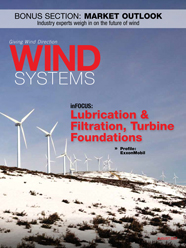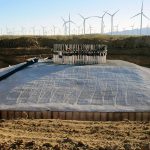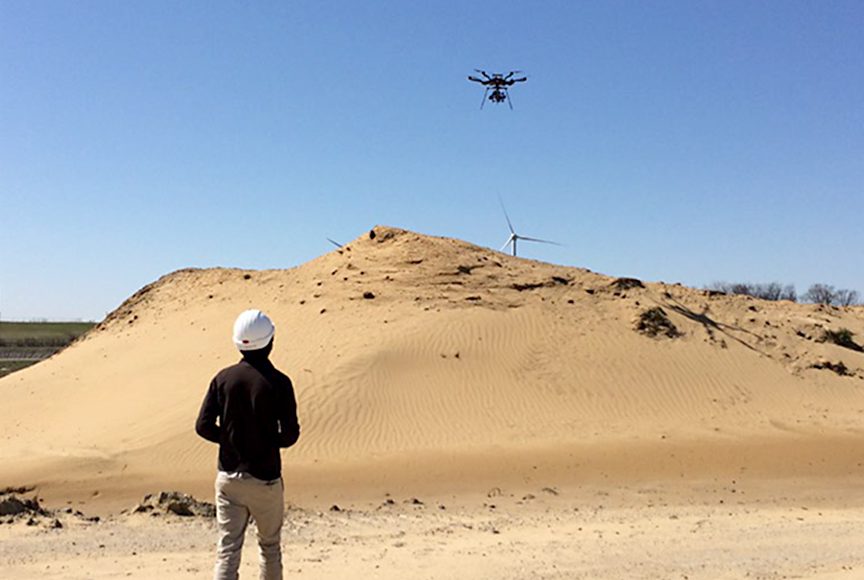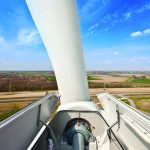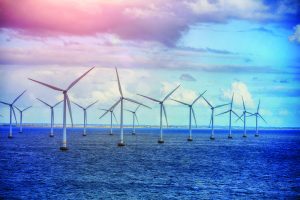Oklahoma, where the wind comes sweepin’ down the plain…
Renowned composers Rodgers and Hammerstein are much better known for their iconic musical numbers than being energy prognosticators, but when their first collaboration, “Oklahoma!,” premiered on Broadway in 1943, no one could have foreseen their lyrics coincidentally giving a nod to the future of renewable energy in the Midwestern state.
But that wind sweepin’ down the plain was exactly the inspiration state officials needed to introduce wind energy to the state.
And introduce it, it did. Since the first wind farm went online in Oklahoma in 2003, the state is now home to 6,600 MW of installed wind power, according to Michael Teague, Oklahoma secretary of Energy and Environment. Those thousands of megawatts of energy now account for more than 25 percent of Oklahoma’s total electrical generation.
Third in U.S.
According to the American Wind Energy Association’s recent 2016 4th Quarter Report, Oklahoma jumped in the state rankings to become the third-ranked in the U.S. for installed wind energy.
“Oklahoma is historically an energy state with its natural resources,” Teague said. “Being home to a top-10 wind resource in the nation, we knew it was just a matter of time before the wind industry would take off in the state. As with most energy markets, it just took things coming together for the right projects to be built with the interest from the state utilities to purchase the power.”
Wind in Oklahoma is expected to continue to grow, although at a slower pace than in previous years, according to Teague.
 “With over a quarter of the state’s electricity coming from wind, future projects and generation will most likely work within the Southwest Power Pool, the regional transmission organization, to move wind-generated electricity to other markets,” he said.
“With over a quarter of the state’s electricity coming from wind, future projects and generation will most likely work within the Southwest Power Pool, the regional transmission organization, to move wind-generated electricity to other markets,” he said.
Several states in the South purchase power created from wind in Oklahoma, including Gulf Power, Georgia Power, and Alabama Power, according to cleanenergy.org.
The Oklahoma Chamber of Commerce recently reported that wind farms should provide more than $1 billion in local property tax revenue, proving that the financial benefits of wind can be found in every nook and cranny.
Renewable Energy Goal
Much of that stems from Oklahoma having already met its renewable energy goal.
“Oklahoma previously had a renewable energy goal of 15 percent renewable energy by 2015,” Teague said. “This was met two years ahead of plan.”
A lot of that extra push for wind more than likely comes from the positive support renewable energy has received from Oklahomans.
“Surveys performed in the state show that residents overwhelmingly support wind,” Teague said. “As wind continues to grow in the state, industry will need to continue the outreach and education efforts to ensure residents are well-educated on the industry.”
As a matter of fact, one such survey noted that 83 percent of Oklahomans were in favor of the state meeting its electricity needs with wind, without any education on the issue. And 91 percent were in favor of developing wind farms for electricity; a figure double that of residents who would want to see further development of coal and nuclear power.
That’s especially true in Elk City, where that Oklahoma city has seen many benefits from wind.
“The growth of wind energy in Oklahoma has led to many rural land owners, including land owned by schools, receiving significant annual royalties,” said Jim D. Mason, director of economic and community development. “A significant number of western Oklahoma schools have received enough royalties to allow them to drop off the state school funding formula. While Elk City has not reached that level, we are in the heart of the Oklahoma wind corridor on Interstate 40 and have two wind farms fully operational and two more that are in process of being constructed within miles of our city.”
The energy created for the grid has a liberal (unpretentious) permitting process, according to Teague.
“Oklahoma has a history and is known for being a business friendly state,” he said. “That is no different when it comes to the wind industry. There is minimal permitting required at the state level. There are some siting considerations with regards to setbacks from hospitals and schools, as well as bond requirements for decommissioning. These are overseen by the state utility commission.”
Wind Education
That education is important as wind continues to supply a big part of the state’s energy needs, according to Teague.
“Not only is Oklahoma historically an energy state, we also have a strong CareerTech program,” he said. “Oklahoma is home to multiple nationally recognized wind technician training programs through our CareerTech system. This, combined with our continued growth in the market and Oklahoma being a great place to live due to our low cost of living, makes Oklahoma a prime location for wind techs and other wind-related jobs.”
The future looks bright — and windy — for Oklahoma’s wind industry with few hurdles on the horizon.
“As it relates to production, the state has had minimal challenges,” Teague said. “Wind forecasting has improved over time, and the geographic diversity of wind projects across the state has also enabled integration of the resource into the grid.”
















